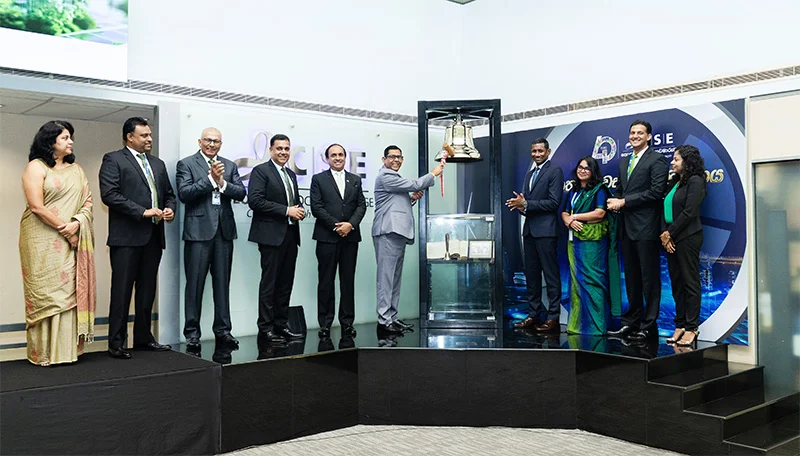Business
Interact Clubs unite for ‘Miles to Protect 2023’ – Do your Part, Care for a Heart

The Interact clubs of Royal College and British School in Colombo, in partnership with Little Hearts, a national fundraising project, are embarking on a mission to improve the safety and well-being of children in Sri Lanka.
Their collaborative initiative, ‘Miles to Protect 2023,’ aims to ensure that children across the country receive the necessary care and protection for a better life. This project has been initiated in response to the alarming number of children living in unsafe and challenging conditions. Through ‘Miles to Protect 2023,’ the Interact clubs seek to raise awareness about the urgent need to safeguard and support these vulnerable children.
The primary objective of this awareness campaign is to educate the public about children affected by heart disease and their specific medical needs. By increasing understanding and empathy, the Interact clubs hope to foster a greater sense of responsibility towards the well-being of these children and encourage community involvement.
The flagship event of the project will commence on July 9th, starting at 4:30 pm, with a symbolic 3-kilometer walk from Royal College Colombo-07 to Green Path Road Colombo 07. This visual representation of commitment serves as a powerful reminder of our collective responsibility to promote awareness and protect the safety of children in Sri Lanka. The Interact clubs cordially invite participants from all walks of life to join them in this significant endeavor.
Following the walk, a captivating musical concert will be hosted at Green Path Road, accompanied by a delightful array of food stalls. This concert provides an excellent opportunity for the community to come together, enjoy remarkable performances, and support a noble cause. All proceeds generated from this project will be donated to Little Hearts, furthering their efforts to build a cardiac and critical care complex at Lady Ridgeway Children’s Hospital.
The ‘Miles to Protect 2023’ project has several objectives at its core. Firstly, it aims to raise awareness among the public about the health and well-being of children in Sri Lanka, shedding light on the challenging conditions many of them face. Additionally, the initiative seeks to allow Interact club members to experience and understand the plight of children with cardiac complications in the country. By engaging the community, the project hopes to foster a sense of shared responsibility for the medical situation and overall well-being of children in Sri Lanka. Lastly, the project aims to make a meaningful contribution to the lives of children suffering from cardiac defects and heart illnesses, offering them a chance at a healthier and brighter future.
The Interact Club of Royal College, sponsored by the Rotary Club of Colombo, has been actively involved in community service since its establishment in 1965. As the oldest functioning Interact Club in Sri Lanka, it has inspired numerous clubs across the country to engage in impactful projects. The Interact Club of The British School in Colombo, chartered in 2006, revived in 2021, underlines the importance of service above self and strives to make a positive change in the lives of people and the community.
The vision of Interact is to provide young people with opportunities to work together in a world fellowship dedicated to service and international understanding. By building respect for the rights of others, developing
constructive leadership, and emphasizing personal responsibility, Interact aims to create a better future for all.
‘Miles to Protect 2023’ is not just an event; it is a collective effort to protect and care for the most vulnerable members of our society – the children. By participating in this initiative, you can contribute to ensuring a safer and brighter future for these children. Join the Interact clubs of Royal College and British School in Colombo on the 9th of July and be a part of this transformative journey towards child safety.
For more information and registration details, please visit our Instagram Page or contact us at [contact details].
Business
Sri Lanka rolls out digital signature framework to accelerate digital economy

Sri Lanka has launched a National Digital Signing Framework, a foundational initiative paving the way for paperless governance. This strategic move eliminates the need for physical signatures and documents in government transactions, aiming to dramatically enhance efficiency, transparency, and accessibility for citizens and businesses. An analyst said that this could accelerate Sri Lanka’s governance and commercial relationships with other countries as traditional signatures make room for digitally signed documents accepted by the government.
In this significant step toward accelerating Sri Lanka’s digital transformation, eMudhra, a global leader in digital identity and security solutions, has entered into a strategic partnership with LankaSign the only Certification Service Provider (CSP) in the country that complies with the Electronic Transactions Act No. 19 of 2006, operated by LankaPay, Sri Lanka’s national payment network during recently held inauguration of INFOTEL 2025 ICT exhibition at Sirimavo Bandaranaike Exhibition Hall.
The LankaSign–eMudhra partnership brings together the strengths of LankaPay’s legally recognized digital signing certificates issued via LankaSign – the pioneering digital Certification Service Provider in Sri Lanka established in 2009 – and eMudhra’s globally trusted emSigner platform, which has enabled secure digital document signing across more than 68 countries since 2008. Through this collaboration, Sri Lankan citizens and businesses will be able to experience a seamless, secure, and user-friendly digital signing solution, enabling documents to be signed anytime, anywhere using iOS, Android, or web-based applications.
This partnership with eMudhra aligns with the national agenda to promote adoption of digital documents, reduce dependency on paper-based processes, and facilitate a more efficient, transparent, and secure digital economy. This collaboration aims to support the government’s long-term digitalization roadmap by enabling a secure digital documentation layer essential for e-government services, digital finance, and digital transformation.
By Sanath Nanayakkare
Business
Dialog & University of Moratuwa launch open-source Sinhala Voice Model

In a significant move to accelerate technological innovation in Sri Lanka, Dialog Axiata PLC, Sri Lanka’s #1 connectivity provider, and the Dialog-University of Moratuwa (UoM) Research Lab, has announced the release of SinhalaVITS, a state-of-the-art, open-source Text-to-Speech (TTS) model for the Sinhala language.
This non-commercial initiative delivers a powerful, high-quality, and natural-sounding Sinhala voice model to the public, making it freely accessible to developers, researchers, and students. The model is available for download on Hugging Face, the world’s largest open-source AI community, empowering anyone to build and experiment with advanced voice technology.
The SinhalaVITS model is the result of a deep-rooted collaboration that unites Dialog’s industry leadership with the academic excellence of the Dialog–UoM Mobile Communications Research Lab, fulfilling a vital need within Sri Lanka’s tech community for accessible, high-performance tools that drive innovation. By removing cost and licensing barriers tied to proprietary software, Dialog is empowering developers and researchers while fostering a more inclusive, collaborative, and future-ready AI ecosystem. This initiative further reinforces Dialog’s commitment to advancing Sri Lanka’s digital future—investing in open-source technology and academic partnerships to nurture local talent and lay the foundation for next-generation digital services built by Sri Lankans, for Sri Lankans.
Business
HNB signals ESG commitment with oversubscribed LKR 10 bn sustainable bonds

The Hatton National Bank PLC (HNB PLC) commemorated raising LKR 10 bn with its first ever issuance of sustainable bonds by way of a market opening ceremony conducted on the trading floor of the Colombo Stock Exchange (CSE) last week.
The 9th December issuance of 100 mn listed, rated, unsecured senior sustainable bonds, in five year and seven-year tenors, with a par value of LKR 100/- and rated “AA-(lka)” By Fitch Ratings Lanka Limited, was oversubscribed on the same day, raising LKR 10 bn.
Sustainable bonds, which were launched in Sri Lanka for the first time this year, are part of a series of GSS+ (Green, Social, Sustainable & Sustainability Linked) debt instruments. The proceeds of the sustainable bond issuance will be used by HNB PLC to fund the development and installation of solar, wind, biomass and hydropower projects, improve energy efficiency through retrofits, fund the construction of recognized ‘green’ buildings, fund investment infrastructure for water treatment, water conservation and efficient agricultural water technologies, finance housing development, healthcare and education for low- and middle-income families, promote women entrepreneurship, amongst others initiatives.
Damith Pallewatte, Managing Director and CEO of HNB PLC, who was the ceremony’s keynote speaker remarked upon the issuance of sustainable bonds commenting: “HNB’s LKR 10 bn sustainable bond issuance is a landmark step in advancing Sri Lanka’s sustainability agenda.”
Delivering his welcome address at the event, Rajeeva Bandaranaike, CEO of CSE, remarked upon rising corporate engagement in CSE’s GSS+ debt instruments stating: “HNB’s Sustainable Bond represents a welcome new addition to the list of leading Sri Lankan financial instruments that have set the example for the success of CSE’s GSS+ Bond framework which have allowed the capital market to operate as a financing vehicle for sustainable and socially equitable projects.”
-

 News2 days ago
News2 days agoMembers of Lankan Community in Washington D.C. donates to ‘Rebuilding Sri Lanka’ Flood Relief Fund
-

 News7 days ago
News7 days agoPope fires broadside: ‘The Holy See won’t be a silent bystander to the grave disparities, injustices, and fundamental human rights violations’
-

 News7 days ago
News7 days agoPakistan hands over 200 tonnes of humanitarian aid to Lanka
-

 Business6 days ago
Business6 days agoUnlocking Sri Lanka’s hidden wealth: A $2 billion mineral opportunity awaits
-

 News6 days ago
News6 days agoArmy engineers set up new Nayaru emergency bridge
-

 News7 days ago
News7 days agoOfficials of NMRA, SPC, and Health Minister under pressure to resign as drug safety concerns mount
-

 News7 days ago
News7 days agoExpert: Lanka destroying its own food security by depending on imported seeds, chemical-intensive agriculture
-

 Editorial7 days ago
Editorial7 days agoFlawed drug regulation endangers lives













